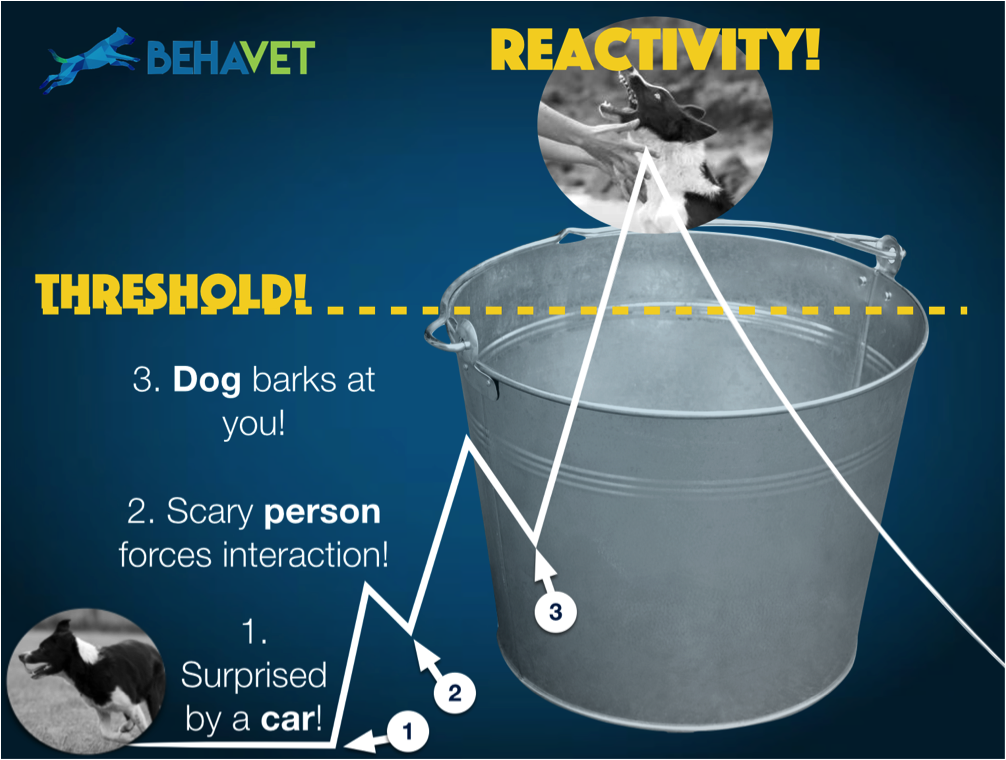What should I do when my dog reacts?
(From Victoria Stilwell’s ‘Positively’)
Naughty But Nice: What should I do when my dog REACTS?
When we come across a situation our dog doesn’t like, whether that be seeing something (e.g. a black wire-haired small dog, a person with a beard, a child, etc.), hearing something or any other experience, there is a huge temptation to encourage interaction with that thing. It’s human nature to feel the need to DO something in that very instant – to FIX the problem.
WARNING – This is the worst thing to do!! Here are four tips to turn worry into confidence!
- Give them a break! Stress levels don’t come down instantly, in fact they can take days to return to their normal levels after an incident! Giving them at least a few days break from both positive and negative arousal/stress events is key to ensuring this does not become a frequent occurrence. My research shows that it can take 72 hours+ before some dogs stop showing a behavioural response after a “reactivity episode”, and this suggests that their buckets may be quite full for some time following that!

- Build an optimist!
The underlying cause of this response is, what I call and for which there is an increasing body of evidence, a pessimistic bias on the way they perceive and process experiences. This means that new or novel and slightly different or ambiguous situations may be presumed to be something negative, something bad!
New thing = it’s going to eat me!
Building an optimist involves, long-term, teaching the dog that new things are something good; we need to make them predictors of good stuff, which in most cases is food! Setting aside some of your dog’s daily food allowance and using this to pay into the optimism bank account by following new or different things with food throughout the day is incredibly effective! Equally, shaping games and filling your dog’s lives with fun massively helps this too!
- Work with SIMILAR, not the same!
When it comes to actually tackling the specific situation that concerned you, I urge you to leave that specific situation well alone and work on similar ones instead! Let’s take the example of your dog lunging forward and barking as a car backfires on a walk.
- First of all, I would give him a break from all things stressful or high arousal for a few days.
- Next up would be setting into action a plan to build your dog as more of an optimist.
- Then you could begin building a more positive association with other loud noises, following the sounds of doors closing, dogs barking in the distance or a truck driving past the house with delivery of food from your dog’s daily food allowance.
- Then you may do the same on a walk,
- and finally the situation may present itself again where a car backfires. The difference this time is that your dog is now much more prepared to perceive this as something not so terrible and what’s more you have practised all the skills to be able to build this specific situation as something positive for your dog!
Forcing interaction with the scary thing is possibly the worst thing you could do in that instant but certainly is the most tempting! Following these three simple tips will ensure long-term success in this!
- Games, Games, Games!
The secret to working with these dogs is using a programme that focusses on simple, quick games you can play in your living room.These games add in the fun, take off the pressure and teach key skills!
games you can play in your living room.These games add in the fun, take off the pressure and teach key skills!
The focus of these games might be, for example, focus, impulse control, calmness or even games that train behaviours you can use in tricky situations, like “middle”. In this latest downloadable and completely three eBook, five games that, in my opinion, are the fundamentals to any programme of working with dogs that may be reactive, easily overaroused, frustrated or just lacking focus or impulse control: http://tinyurl.com/zdjwcdo
Enjoy!



